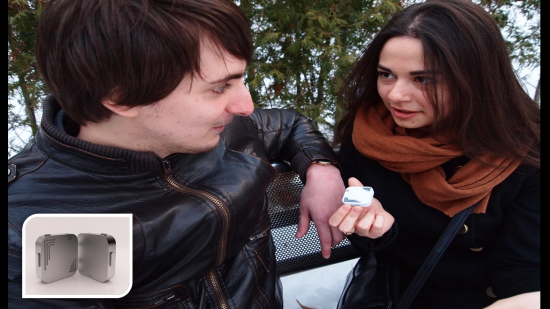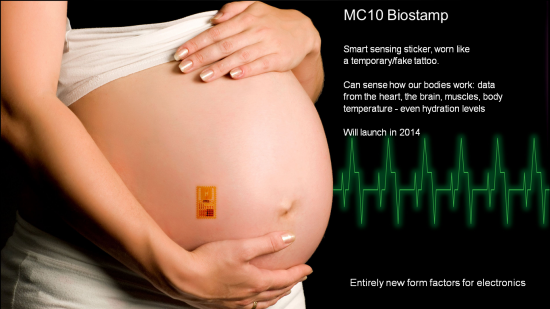































For the past few years, industry pundits have been predicting the death of the personal computer. I look at it a bit differently-the personal computer is not dying, but is becoming even more personal. It is now something you're going to wear-in your clothing, jewelry, shoes, glasses, watches, and even on your skin.
The burgeoning field of wearable technology is hitting the mainstream, illustrated by a new ad campaign from Samsung that employs Dick Tracy, Captain Kirk, and a lineup of other comic and science fiction characters to introduce the new Galaxy Gear smartwatch. In a recent blog, my colleague Joseph Bradley described the wide range of "wearables" that are now available-and sure to be a hot topic at the Internet of Things World Forum in Barcelona next week.
I recently wrote about how wearable technology is helping drive the Internet of Everything (IoE)-and changing the way we live-by connecting people in new and different ways. Today, I'd like to go a little deeper, and explore some of the ways that today's wearable technology might evolve.
One of the principles of this evolution is that technology is getting smaller, faster, cheaper, and more powerful every day. In fact, in terms of physical size, computing technology is becoming 100 times smaller each decade. The computing power of the ENIAC computer that filled a whole room back in 1956 now fits inside the tiny chip of a "musical greeting card" that you can buy for$4 at your local store. The smartphone in your pocket is many times more powerful than the PCs of just a decade ago. And now, all the capabilities of your smartphone are being condensed into smartwatches, which can make phone calls, connect to the Internet, take pictures, and do just about anything else your phone or tablet can do.
But even this miniaturization of technology is dwarfed by the power that is available when you connect to the cloud. One really exciting example is SIGMO-a language translator that you can clip to your shirt, or wear on your wrist. It costs about$50, and when connected to the cloud can provide real-time voice translation of 25 languages. Sigmo blew past its fund-raising goal of$15,000 on the crowd-funding site Indiegogo.com to almost a quarter-million dollars, illustrating the demand for these types of gadgets.
Figure 1. Sigmo voice translator provides real-time cloud-based translation services for 25 languages, and learns as you use it.

For most people today, "wearable technology" brings to mind personal monitoring devices such as Fitbit or Nike+FuelBand that record heart rate, blood pressure, intensity of exercise, and even sleep patterns. This concept is evolving to be even more personal, and not just for the benefit of the wearer. Expectant mothers will wear electronic "tattoos"-smart sensing stickers that can monitor fetal heart rate and brain waves, detect early signs of labor, and even notify the doctor directly when it's time to go to the hospital.
Figure 2. Smart electronic "tattoos" will enable continual fetal monitoring. Today, the data must be uploaded by going near a reader, but in the future the data will be uploaded to the cloud in real time, from anywhere.

The concept of wearables isn't new. For millennia, people have been adorning themselves with tattoos, piercings, and jewelry that communicate something about who they are, what they do, and where they are from. Today's wearables just sense and communicate much, much more. Further along on the wearable continuum will be "embeddables," which may be sensors placed under the skin or swallowed. Today, the Proteus smart pill can send a text to a doctor or relative from inside the body to confirm that medication has been taken. In the future, such ingestible devices will be able to send a picture from inside the GI tract to aid diagnoses and reduce the need for surgery and other invasive procedures.
I can even imagine the day when wearables evolve into replaceables. Today, we use cornea transplants to repair damaged eyes. In the future, we may be able to insert artificial eyes with zoom capabilities, infrared sensors, and night vision. The prosthetics we use for limb replacement will become even more powerful and flexible than the original "organic" limbs.
All of these possibilities will be enabled by the Internet of Everything, providing rich and valuable connections among people, process, data, and things. And these examples are just the beginning. As technology continues to become smaller, cheaper, and more powerful, and as the number of connected things in the world grows to 50 billion in the next decade, the true possibilities may go far beyond what we can imagine today.
How do you see wearable technology evolving? Join the conversation by commenting below.
 Tags chauds:
Internet of Things (IoT)
Internet of Everything (IOE)
IoE
wearable technology
electronic tattoo
smart pill
Tags chauds:
Internet of Things (IoT)
Internet of Everything (IOE)
IoE
wearable technology
electronic tattoo
smart pill